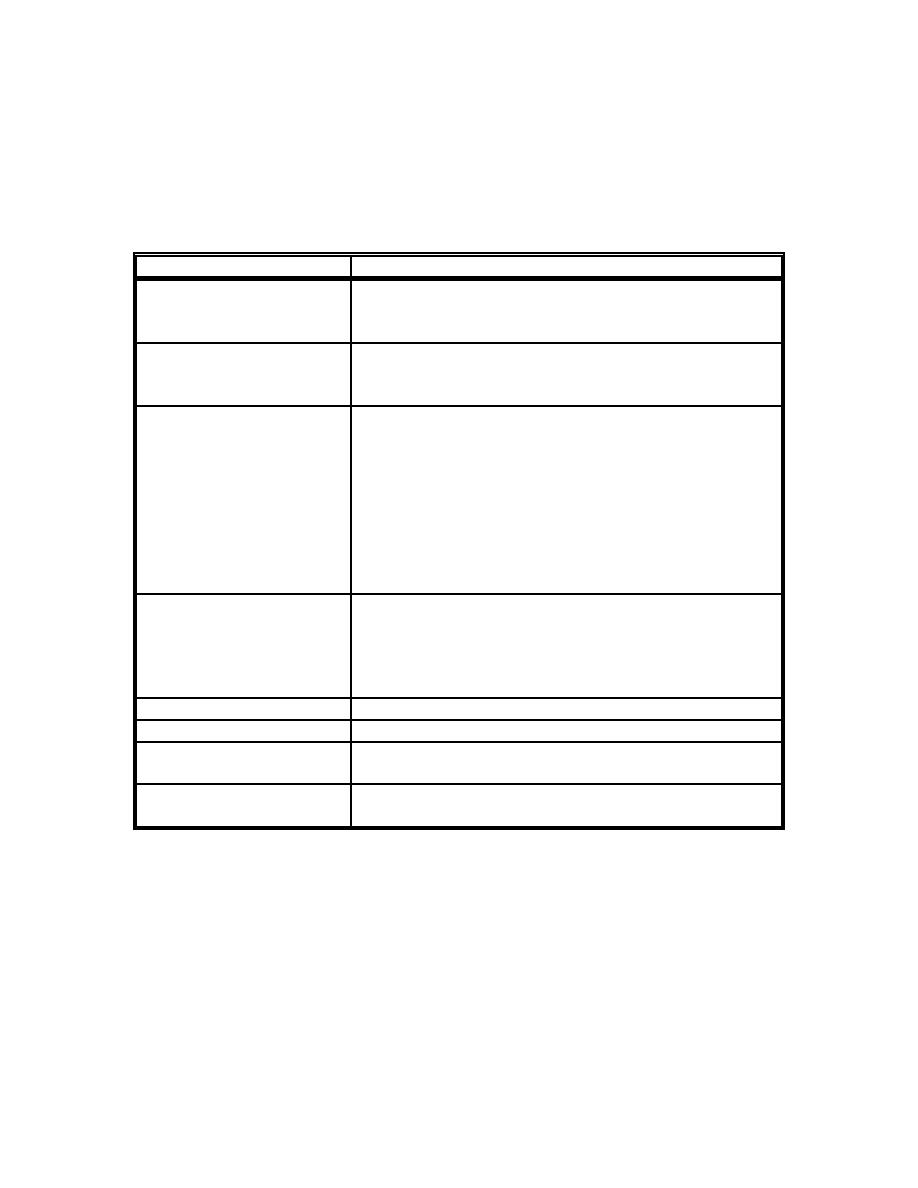
UFC 4-159-03
3 October 2005
3-6
VESSEL DESIGN CONSIDERATIONS. Some important vessel mooring
design considerations are summarized in Table 3-11. General information on ships can
be found in the Ships Characteristics Database (WATERS TOOLBOX) and in the
NAVSEA Hitchhikers Guide to Navy Surface Ships.
Table 3-11. Design Considerations - Ship
PARAMETER
NOTES
Ship fittings
The type, capacity, location, and number of
mooring fittings on the ship are critical in designing
moorings.
Ship hardware
The type, capacity, location, and number of other
mooring hardware (chain, anchors, winches, etc.)
on the ship are critical.
Buoyancy
The ship's buoyancy supports the ship up in the
heave, pitch, and roll directions. Therefore, it is
usually undesirable to have much mooring capacity
in these directions. A large ship, for example, may
have over a million pounds of buoyancy for a foot of
water level rise. If an unusually large water level
rise occurs for a mooring with a large component of
the mooring force in the vertical direction, this could
result in mooring failure.
Hull pressures
Ships are designed so that only a certain allowable
pressure can be safely resisted. Allowable hull
pressures and fender design are discussed in
NFESC TR-6015-OCN, Foam-Filled Fender Design
to Prevent Hull Damage.
Personnel access
Personnel access must be provided.
Cargo Loading
Ramps/sideport locations
Hotel services
Provision must be made for utilities and other hotel
services.
Ship condition
Ships are typically in the "Light", "One-Third Stores"
or "Fully-Loaded" condition or displacement.
3-7
FACILITY DESIGN CONSIDERATIONS. Some important facility mooring
design considerations are summarized in Table 3-12.
40


 Previous Page
Previous Page
